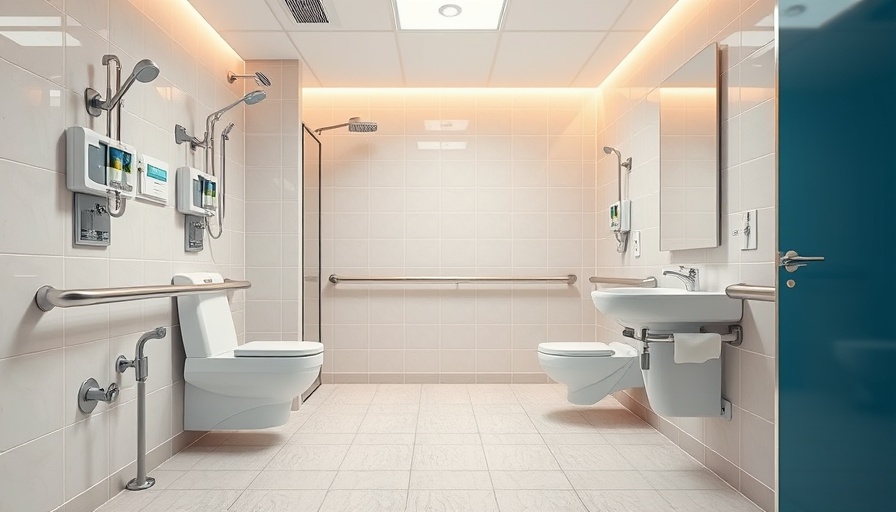
Understanding ADA Compliance: A Necessity for All
Designing an ADA-compliant bathroom is not just a recommendation but a necessity for residents in Toms River. As the population ages and the incidence of disabilities rises, it is crucial to create spaces that welcome and accommodate everyone. The Americans with Disabilities Act (ADA) was enacted to ensure equal opportunities for individuals with disabilities. For homeowners, understanding ADA compliance means crafting a space that is functional, safe, and stylish.
Key Features Every ADA-Compliant Bathroom Should Have
One of the cornerstones of an ADA-compliant bathroom lies in its features. Integrating grab bars, for instance, is not just a matter of compliance but of enhancing safety and convenience. Grab bars should be positioned between 33 to 36 inches from the floor and can support at least 250 pounds. When properly installed, they provide vital support for individuals transitioning in and out of showers or onto toilets.
Additionally, curbless showers and walk-in tubs are essential design elements for easy access. These features eradicate common hazards associated with bath-time slips and falls, offering a seamless transition without the nuisances of lifting over ledges. With sloped flooring directing water toward the drain, these designs focus on safety without sacrificing aesthetic appeal.
Choosing the Right Flooring: A Matter of Safety
The choice of flooring material becomes pivotal when designing an ADA-compliant bathroom. Safety should reign supreme; therefore, opting for slip-resistant materials is essential, especially where water tends to accumulate. Vinyl and rubber options not only cater to this requirement but also add vibrancy and character to a bathroom.
Moreover, textured tiles can elevate design while ensuring safety. Always consider that functionality must go hand in hand with aesthetics; these choices can help create a welcoming environment while prioritizing user safety.
The Importance of Space: Mobility and Accessibility
Another significant consideration revolves around the spatial design of an ADA-compliant bathroom. A minimum turning radius of 60 inches is suggested to allow ample space for mobility devices like wheelchairs. Additionally, it is essential to clear obstructive elements to provide easy passage throughout the bathroom. Sinks and toilets must be strategically placed to ensure they are accessible, catering to individuals with varying mobility needs.
Benefits of Creating an Accessible Bathroom
Creating an ADA-compliant bathroom is more than a legal obligation; it bolsters community and familial inclusivity. By addressing accessibility, Toms River residents can ensure that their homes cater to all guests—friends, family, and themselves—enhancing the quality of life for everyone. Accessible renovations stimulate independence, dignity, and comfort.
Empowered living does not end at the installation of fixtures. By enriching knowledge on ADA guidelines, Toms River homeowners are driven to make informed decisions about modifications to their homes. The journey to a more accessible home begins with understanding these foundational principles.
Shifting Perspectives: Why Accessibility Matters
Shifting perspectives on accessibility invites conversations that resonate with not just individuals with disabilities, but with all community members. The narrative surrounding disability often focuses on limitations. However, accessible designs and home environments emphasize inclusion and empowerment.
Efforts to create ADA-compliant bathrooms bring forth layers of understanding and responsibility as homeowners champion inclusivity in their spaces. Ultimately, fostering a culture that places value on accessibility strengthens our communities where everyone can thrive and feel comfortable at home.
Conclusion: The Empowerment of Knowledge
Designing an ADA-compliant bathroom is about more than just compliance; it reflects understanding, compassion, and a commitment to enhancing the quality of life. Residents of Toms River can benefit immensely from this knowledge, ensuring that their homes are not just beautiful but functional for everyone. As we adapt to the demands of a changing world, let us embrace the idea that accessibility is a right and a standard we can all contribute to upholding.
 Add Row
Add Row  Add
Add 




Write A Comment